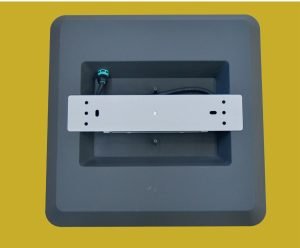There aren’t many variables for a conventional LED industrial luminaire. LEDs, at least as far as the 3-4 best manufacturers worldwide are concerned, are more or less all the same, the same can be said for power supplies. So what can you do to improve efficiency? The easiest way is to just write it in the catalogs, as many do, reporting efficiencies of 140 or 150 lumen W which in reality refer only to the LEDs, without taking into account the losses due to the temperature, the lenses, the glass for power supplies. Losses which, added up, range from 20% for simple fixtures, without lenses and with direct mains power supplies, to 32-33% for fixtures equipped with lenses, glass and ballasts with primary/secondary insulation (as common sense recommends). Another solution is to use low-power plastic LEDs, which are the most efficient but have a short life (20-30,000 hours with 30% flow losses). The third way is to create innovative products, such as our.
MY36 FASTENING
Basically, the following solutions are provided for installing the MY36B appliance.
1) CEILING FIXED
Ceiling installation is the most common; to do this, remove the bracket from the appliance by unscrewing the 2 M5 screws (fig. 1/A and 1/B).
When the bracket is separated from the appliance, locate the most suitable holes in the bracket for fixing it. The choice of holes and screws or accessories for fixing must be made according to the material of which the ceiling is built. When the bracket is fixed
FIG.1/a

FIG.1/b

2) HANGING FROM BLINDOS BAR OR CEILING
The MY36B appliance is equipped with a bracket (fig. 1/a) with holes. To hang it from the ceiling, use 2 eyebolts to insert in these holes. For installation on busway use special hooks.





